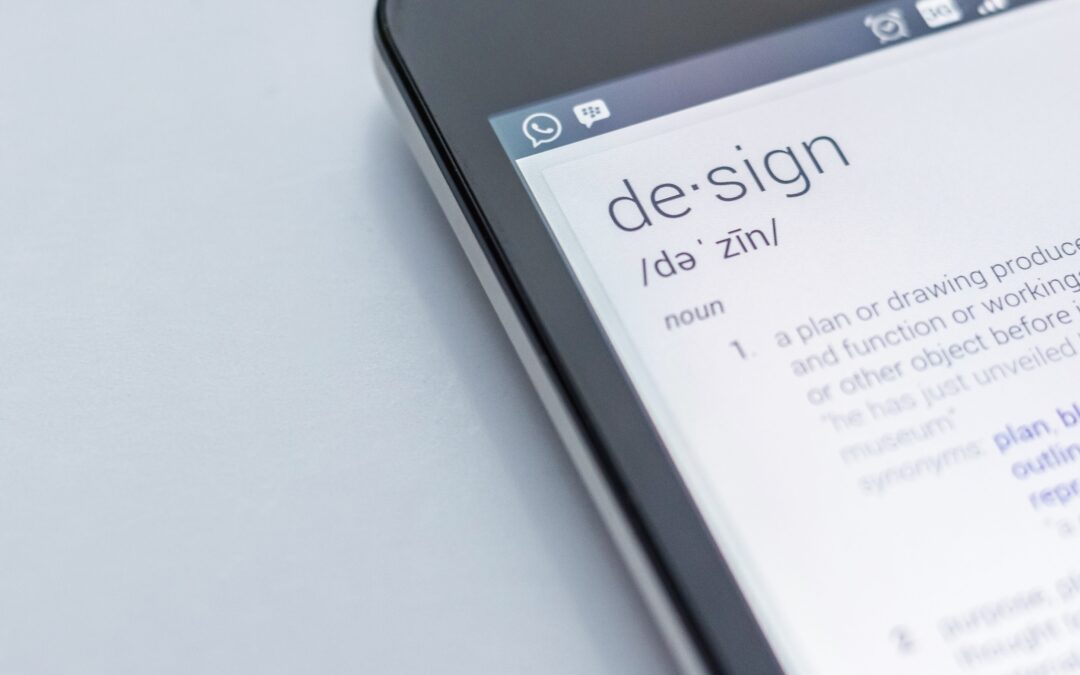“If you can’t explain something simply, you don’t understand it well enough.”
Albert Einstein (supposedly)
This is one of my favorite quotes because it’s an absolute gut punch. You think you know something, probably because you’ve been saying and doing it for years. Then someone comes along and asks you to explain it, and suddenly, you’re just standing there, mouth agape, gesturing, hoping that this wacky game of charades produces an answer.
This happened to me last Monday.
While preparing to teach a course titled “Design Innovation Lab,” I thought it would be a good idea to define “design” and “innovation.” I already had a slide with the definition of “innovation” – something new that creates value – but when I had to make one for “design,” my stomach sank.
My first definition was “pretty pictures,” which is both wrong and slightly demeaning because designers do that and so much more. My second definition, I know it when I see it, was worse.
So, I Googled the definition.
Then I asked ChatGPT.
Then I asked some designer friends.
No one had a simple definition of Design.
As the clock ticked closer to 6:00 pm, I defaulted to a definition from the International Council of Design:
“Design is a discipline of study and practice focused on the interaction between a person – a “user” – and the man-made environment, taking into account aesthetic, functional, contextual, cultural, and societal considerations. As a formalized discipline, design is a modern construct.”
Before unveiling this definition to a classroom full of degreed designers pursuing their Master’s in Design, I asked them to define “design.”
It went as well as all my previous attempts. Lots of thoughts and ideas. Lots of “it’s this but not that.” Lots of debate about whether it needs to have a purpose for it to be distinct from art.
Absolutely no simple explanations or punchy definitions.
So, when I unveiled the definition from the very official-sounding International Council of Design, we all just stared at it.
“Yes, but it’s not quite right.”
“It is all those things, but it’s more than just those things.”
“I guess it is a ‘modern construct’ when you think of it as a job, but we’ve done it forever.”
As we squinted and puzzled, what was missing slowly dawned on us.
There was nothing human in this definition. There was no mention of feelings or empathy, life or nature, connection or community, aspirations or dreams.
In this definition, designers consider multiple aspects of an unnatural environment in creating something to be used. Designers are simply the step before mass production begins.
Who wants to do that?
Who wants to be a stop, however necessary, on a conveyor belt of sameness?
Yet that’s what we become when we strip the humanness out of our work.
Humans are messy, emotional, unpredictable, irrational, challenging, and infuriating.
We’re also interesting, creative, imaginative, hopeful, kind, curious, hard-working, and resilient.
When we try to strip away human messiness to create MECE (mutually exclusive, collectively exhaustive) target markets and customer personas, we strip away the human we’re creating for.
When we ignore unpredictable and irrational feedback on our ideas, we ignore the creative and imaginative answers that could improve our ideas.
When we give up on a challenge because it’s more difficult than expected and doesn’t produce immediate results, we give up hope, resiliency, and the opportunity to improve things.
I still don’t have a simple definition of design, but I know that one that doesn’t acknowledge all the aspects of a human beyond just being a “user” isn’t correct.
Even if you explain something simply, you may not understand it well enough.

as an Industrial Design major – I couldn’t help but dwell on your latest article!! You’re right – NOT EASY… I came up with the following:
The process of translating an idea (concept) from words and mental imagery into a tangible, visible, 2D or 3D construct.
How did that compare to the many brainstorms I’m sure your students had?!
I think you nailed the first part – the translation of an idea to something tangible – and I am absolutely certain that my students would be all over the 2D or 3D construct. I think there’s a second part that’s about the purpose or the intended ends to which you are creating. Does that make sense?
design = the act of creating with a purpose
sometimes we create things to express our feelings or dreams. when something is designed it is meant to serve a functional purpose for someone or something.
This was the essence of the great Art vs. Design debate. Ultimately we got to exactly where you are (no surprise you’re leading the way!) that both are acts of creation but Art is an act of expression while Design is done for a purpose. Thanks for such a succinct definition. You officially understand Design “well enough.”
Love this piece. It applies to so much beyond design and speaks to our business behavior today. Am I the only one who views the workplace as trying to strip away the human element? I know our colleagues who work at Starbucks or UPS or the UAW feel that way; worker productivity rules assume that we don’t even need to use a bathroom – let alone share a chuckle with a co-worker.
One thing I know for sure…your students are lucky to have you in the room!
Oh, the humanity! Great point, Linda. So many businesses are stripping away the humanity of their people and the work we do. This is ironic because everyone is so afraid of being replaced by robots and AI, yet we’re actively working on ways to make that happen when we treat people like they’re robots. Of course, some people do benefit, but it’s the few at the top.
This is also making me think that I need to amend my definition of innovation to be “something new that creates value for humans“